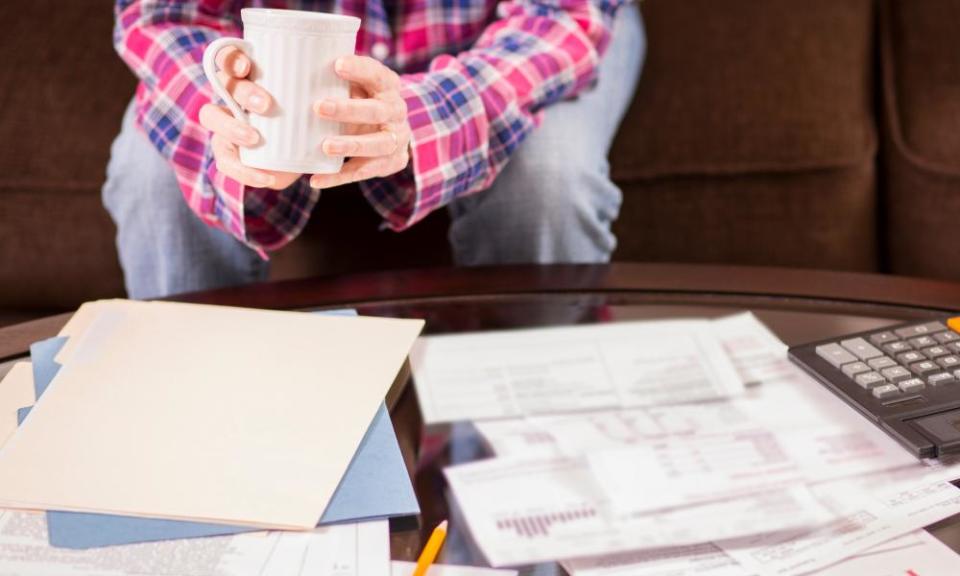Teaching women financial capability is the first step in fighting domestic violence

As the political beltway consumed itself in a fight over what was allowed to feature on the Sydney Opera House and the rest of the country remained glued to the Bachelor finale, six Australian women were killed.
It is easy to feel powerless when confronted with tragic news of women being killed or beaten by those who purport to love them.
Such stories are often met with calls for for an unlimited funding of services and interventions. While the $100m women’s safety package and the recent introduction of five days domestic violence leave are welcomed contributions by the federal government, funding alone cannot be enough.
In my home state of Victoria I recently visited specialist family violence service Edvos, which not only works with victims of domestic violence, but performs the crucial task of identifying victims early when intervention can make the most difference.
Despite ever increasing financial commitments by governments and improving access to quality services, the statistics – and the demand – remain unacceptably high.
Some suggest awareness campaigns and less stigma around domestic violence has led to increased reporting, keeping statistics seemingly stagnant. Others suggest it may be a result of the slow pace of cultural change, despite the efficacy of confronting campaigns like the recent “Stop it at the Start”.
Economic isolation is a leading indicator of abuse
Cultural change cannot be fought with dollars alone. At least not in the traditional sense.
It may not cause the black eyes or bruises we associate with domestic violence, but economic disempowerment is a common and insidious form of abuse. It can involve situations where finances are controlled or removed altogether by an abusive partner. Some reports suggest 16% of women will experience this in their lifetime. More shockingly, that number rises to nearly 90% among people who experience domestic and family violence.
While emotional abuse depletes someone’s psychological resolve and resilience, economic abuse depletes their financial independence and confidence.
It may be through menacing scrutiny or even veto of basic household spending, or a blockade of any knowledge or oversight of bank accounts, loans, transactions and savings. Whatever the manifestation, the evidence is clear; economic isolation is a leading indicator of abuse.
This problem is shameful, and all too common, but it is not insurmountable.
Rather than continually increasing dollars to policies that respond to domestic violence after the fact, improving women’s financial capability will enable effective prevention and help women lead truly independent lives that are free of violence.
It is important to make the distinction between financial capability and financial literacy. Financial literacy implies an understanding of complex concepts, instruments or investment strategies. Financial capability is more about confidence of knowing where to look, what to look for, what is required to prevent economic vulnerability, and where to go for answers to questions.
The policy challenge is how to disseminate this information far and wide, early, and where it is needed most. School curriculums are the obvious first choice; but information and education cannot end there.
Gainful employment is a good start. This is one of the unsung benefits of the significant increase in employment we have seen over the past few years, accompanied by a record high female workforce participation rate.
Financial capability does not necessarily mean women need to be the major bread-winner, or even a significant contributor to household income, as is often the case when children are young.
Whether it be as complicated as a family trust or a self-managed super fund, or something as simple as a bank account or credit card, it is imperative that women can confidently navigate the financial arrangements that abusive partners may use to control them.
Many Australian banks have already taken a lead on providing comprehensive guidance to recognise financial abuse that customers could be experiencing. In the first month of the Commonwealth Bank’s 12-month pilot, it received more than 87,000 calls. To date around 6,000 people have accessed assistance, many of them young women from New South Wales, Western Australia, Queensland and Victoria.
As White Ribbon Day approaches, it would serve us all well to remember it shouldn’t require instances of gross violence for us to empower a generation of women and give them the best chance at a life of contribution to society, free of abuse.
• If you or someone you know is experiencing violence and need help or support with domestic or sexual violence please contact 1800 RESPECT. In Australia, the crisis support service Lifeline is on 13 11 14 and the national family violence counselling service is on 1800 737 732. Wire provides free generalist information, support and referral service run by women for women, including specific information on financial abuse on 1300 134 130. In the UK, Samaritans can be contacted on 116 123 and the domestic violence helpline is on 0808 2000 247. In the US, the domestic violence hotline is 1-800-799-SAFE (7233). Other international helplines can be found at www.befrienders.org.
• Jane Hume is a Liberal Senator for Victoria
• Comments are pre-moderated to ensure the discussion is about topics that have been addressed in this article

 Yahoo News
Yahoo News 